It is no wonder that Spain is one of the most visited countries in the world. A large and diverse nation with landscapes ranging from mountains to beaches and climates from temperate to continental, it has a rich culture that transcends food or clothing. Steeped in history, its many provinces have a distinct identity of their own which is often bolstered by a unique language or dialect. The cuisine, the dress and even the etiquette changes as you move from one region to another. In this respect, Spain is a lot like India.
After our first dates with the Spanish and Portuguese capitals we turned back once again towards the Iberian peninsula; this time to get close and personal with the most singular region of Andalusia. Surrounded by mountains to the north and flanked by Mediterranean and Atlantic to the East and West respectively, this region is known for its dry hot summers and boy is that right. We arrived in the last week of September and day time highs were still in their mid 30s and the heat wouldn’t subside even in late evenings. But the nights were relatively cooler and a table fan was more than sufficient. As we arrived on an overnight bus from Lisbon which dropped us off at the main bus station rather early we spent most of the morning sleeping in our comfortable Airbnb. A 10 min walk across the Puente del Cachorro, in the famous Triana neighborhood, our little rental was optimal in every way. Although it did involve crossing the river everytime we had to go into the old town, we didn’t mind the serene views over the Guadilquivir at all.
To begin our tour of the Andalusian capital we naturally picked the Plaza de Espana.


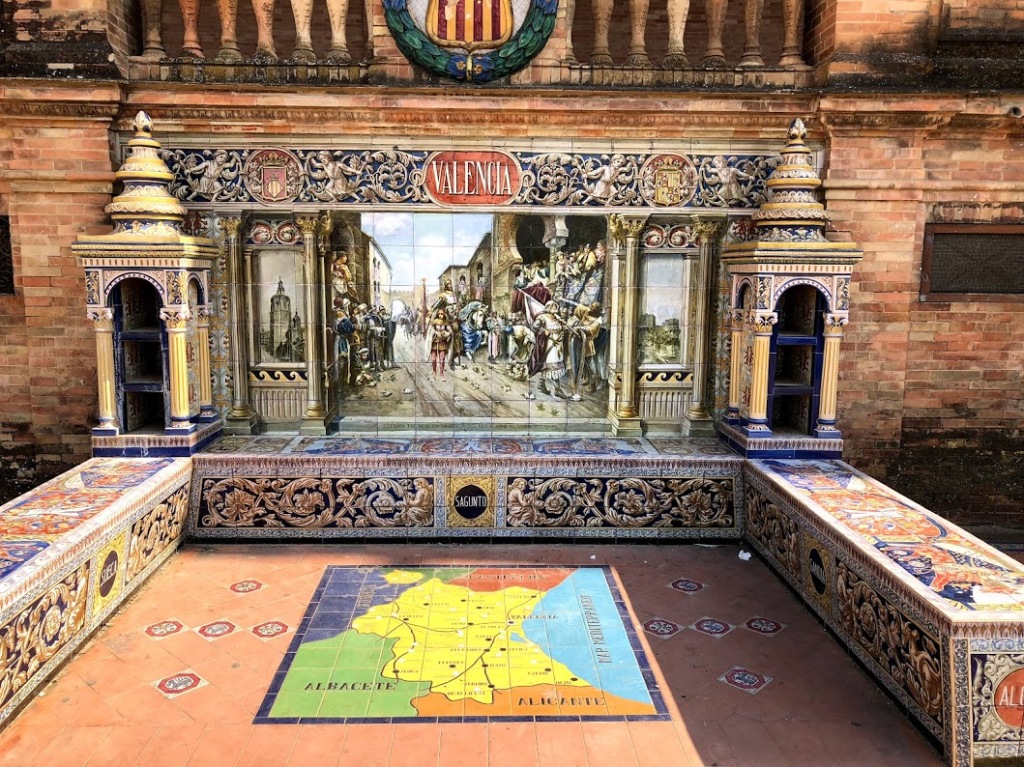
Built in 1929 for the Ibero-American exposition, this building is the undisputed symbol of Seville, the Andalusian capital. It is an iconic building which brings together many styles of architecture, the most noteworthy being the Neo-Mudejar style which is typical of this region. It refers to the heavy influence of Islamic styles that gained popularity during the 700 year rule of Moors from North Africa. These included different dynasties over the centuries who are often clubbed together under the Moorish title laying stress on their common origin. The actual plaza and surrounding buildings which presently house government offices are located at the end of the largest green area of the city- Parque de Maria Luisa. The park in itself is a great way to spend the hot afternoons where you can enjoy the ornamental fountains, ponds and exotic plants from different parts of the world. The city council has taken much pain to restore and maintain both the park and the plaza. My personal recommendation is to come here in the late evening as there is enough natural light till after 8 pm and the scorching sun is out of the way.


When you are done feeding the ducks and watching street performances at the Plaza turn left towards the Seville university. After you cross the university on your right you will see the iconic Puerta de Jerez plaza with the Hispalis fountain in the centre. Stop by to marvel at the regionalist architecture and march onward on the Constitution avenue till you bump into only the largest Gothic cathedral in the world.

The Cathedral of Saint Mary of the See or Seville cathedral covers more than 11,500 square metres in area and as is the case with so many buildings in this part of Spain it was built replacing Almohad structures which stood here until after the Reconquista. During our next trip to Turkey in 2019 I couldn’t help but be amused by the reverse order of things in that country with respect to Spain. Whereas in Spain the Christian rulers reclaimed the Muslim Iberian peninsula in the name of their God, in Turkey the Muslim Ottomans pushed out the Christian Byzantines in the name of theirs. Godly manipulation, eh?
What is remarkable though is that successive rulers in both countries in spite of their religious leanings continued to preserve what is beautiful and exquisite. The Christian monarchs of Andalusia were patrons of Moorish art and architecture which continued to flourish through the centuries and has been immortalized in the numerous Mudejar buildings of this region.




Walking around old town you feel transported to a distant past as medieval Spain comes to life on the paved streets being trampled by the hoofs of Andalusian horses. Pass them along and continue towards the river in the direction of the Isabel bridge and you will be rewarded with yet another Andalusian curiosity in about 5 minutes.

Plaza de Toros, a 12000 capacity bullfighting ring right in the heart of the city is not only a memorial to the somewhat cruel but centuries old traditional and cultural sport of bullfighting but an active stadium that hosts the most popular bullfighting festivals of Spain every year. Built in the 18th century this ring has a royal box that is reserved for the Spanish royalty only. Others can buy tickets to the fight itself or a EUR 9 guided audio tour which takes you through the history of bullfighting and this building over an hour or so.



Exhausted after an eventful and active day you might want to grab a bite or two or simply sit down for a cool refreshing drink. There are so many places in the city that I wouldn’t know where to start but if you’re in for some local flavor and none of that touristy bustle, come to Mercado de Triana, just off the Isabel bridge on the other side of the river. My personal recommendation is to start with a fresh cup of Gazpacho to cool it off.

Start your next day as early as possible and devote at least 3-4 hours to the one and only Real Alcazar of Seville. We had missed buying our tickets online and were forced to stand in a queue for over 30 minutes in the afternoon sun which in my view was completely avoidable.
The Almohad dynasty lost Seville to Castilian monarchs in late 1200s. Their royal palace Al-Mubarak which stood in this spot was demolished during the Reconquista to make way for a new palace for the Christian rulers of Seville. There is little that is left of the original structure today and what we know as the Real Alcazar of Seville is the palace King Peter built and others continued to enhance over the next 500 years. Peter or Don Pedro was an orientalist of sorts and went to great lengths to preserve and promote Islamic architecture of the Moors which was at its peak then. The amalgamation of these elements with the 14th century needs of the Christian monarchs and the other dominant styles of the next 500 years of European architecture have given shape to this exquisite palace. Take an audio guide or a map to help you navigate your way through this great historical journey.



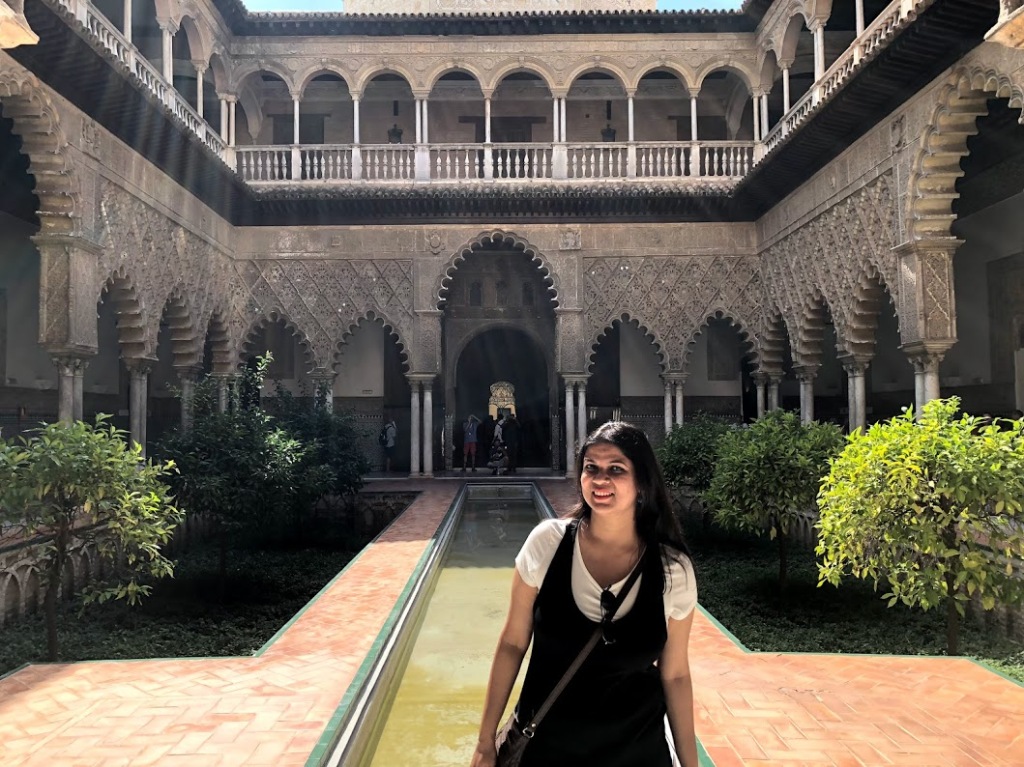



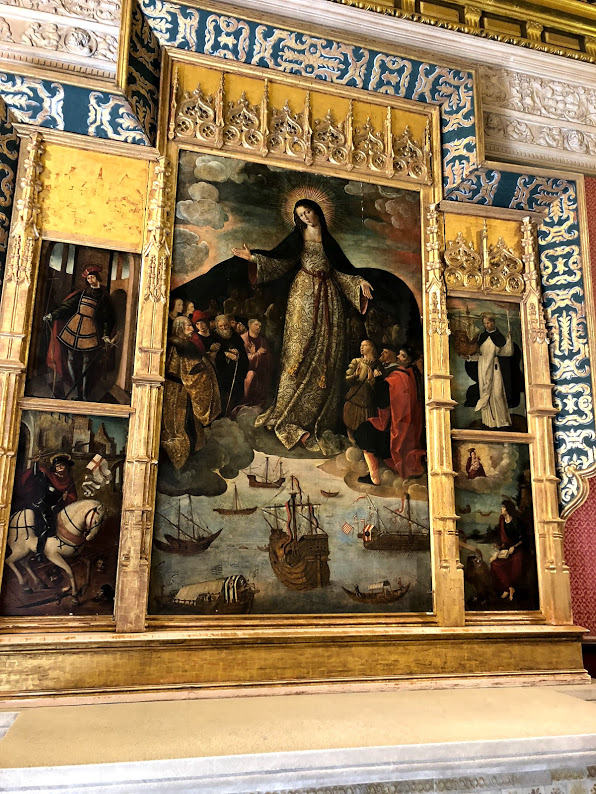
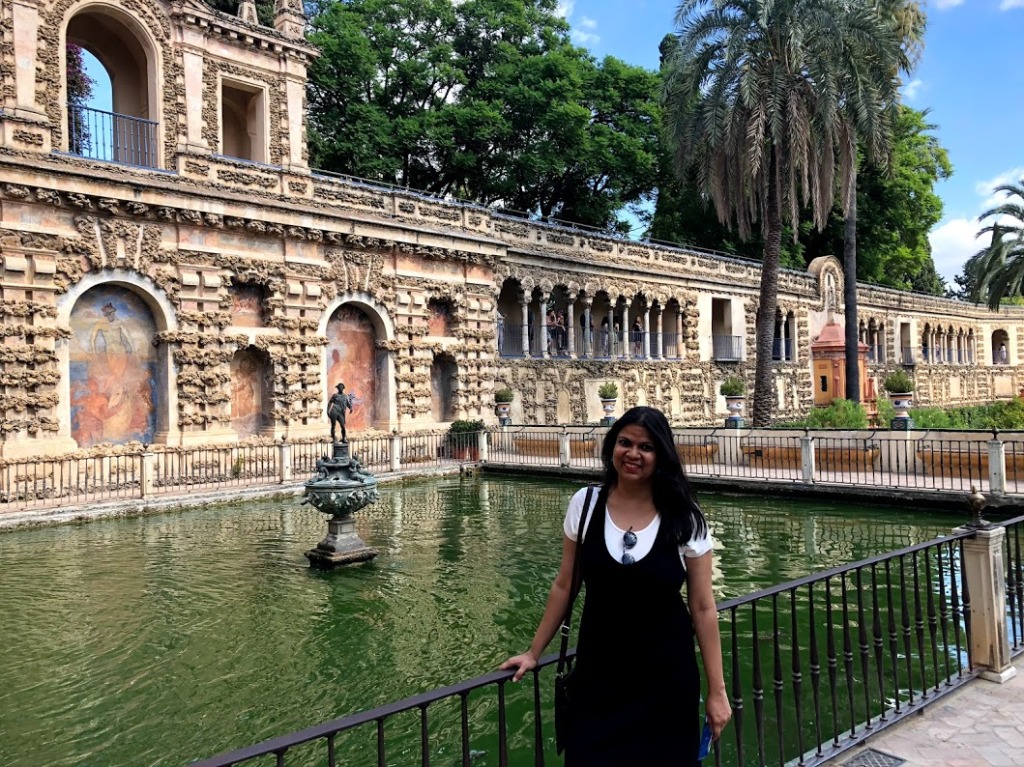




A day spent at the royal palace will tire you out and I wouldn’t push for another big attraction for the rest of the day. But you could enjoy a liesurly stroll around the old town or explore the different bridges over the Guadilquivir. There are some other attractions which can be easily covered while you stroll. The Mushrooms of Seville offer great photo opportunities from the platform and the observation deck. Local children gather for fun activities like martial arts or free style dancing here. Torre del Oro on the river bank can also be accessed by paying EUR 3 or you could simply go around for free.
The Triana neighborhood is famous for its Flamenco bars and if time permits, do indulge in an evening of Flamenco music and dance at your neighborhood bar. Seville has much more to offer but having seen the things we wanted to the most, it was time for us to move on to the other great city of Al-Andalus.
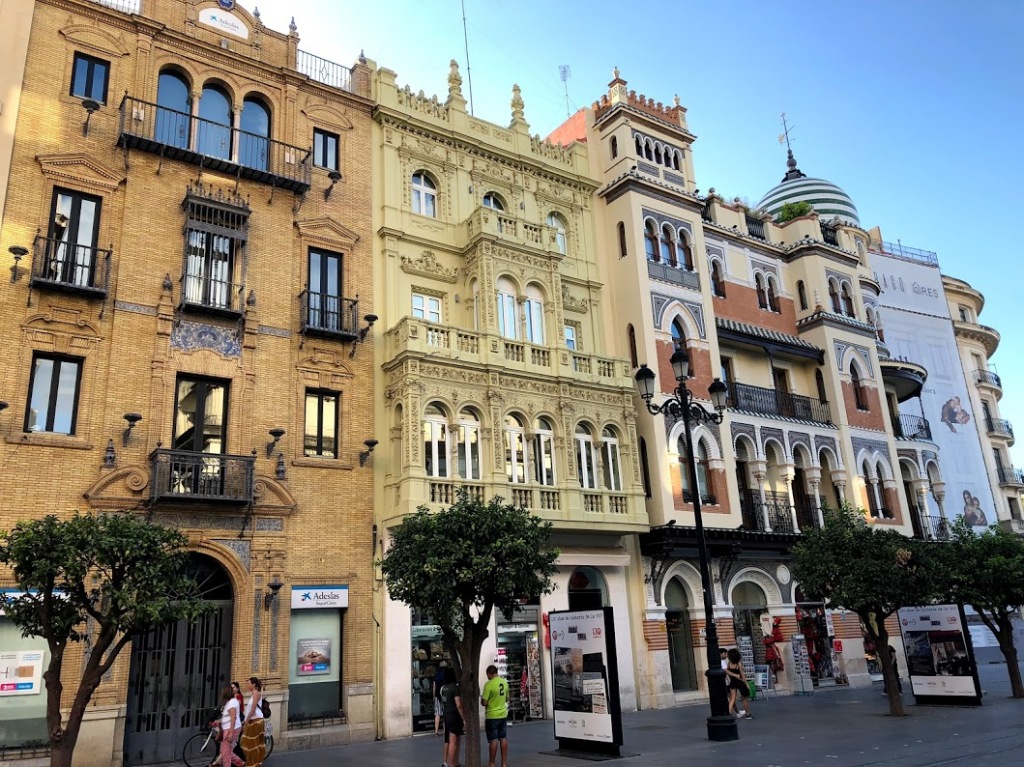
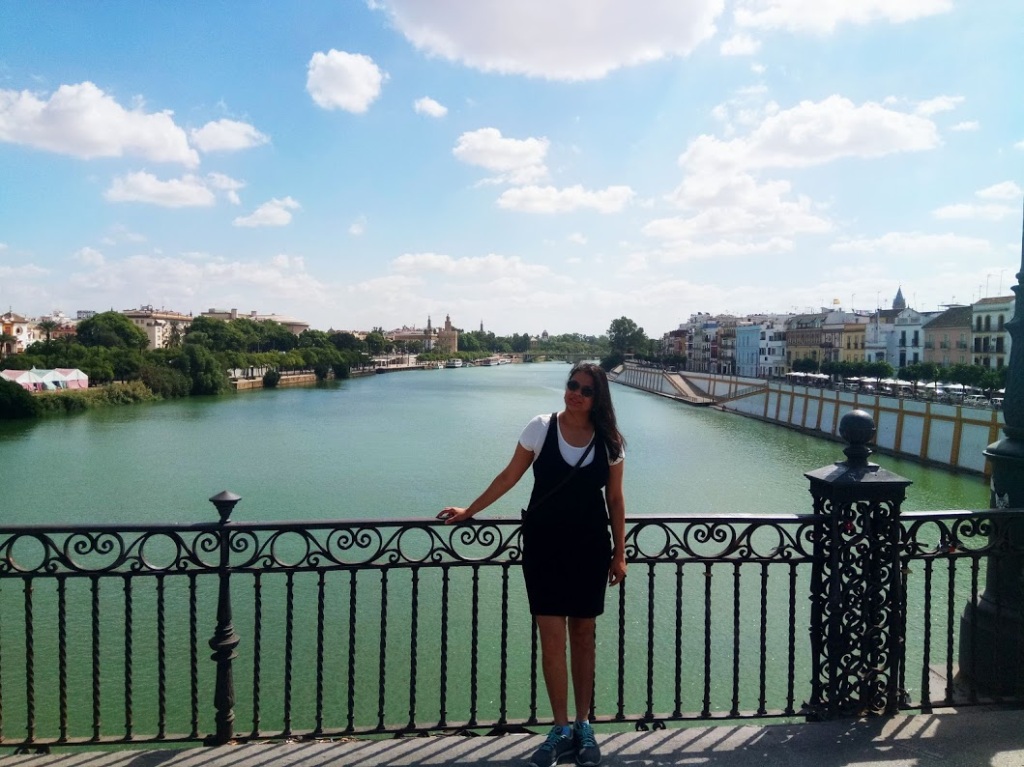



A 3 hour bus journey will bring you to Granada, another historically and culturally important city in the region. The seat of the last Muslim dynasty that ruled in the Iberian peninsula before the whole of Spain was once again reconquered by the Christians, the emirate of Granada was ruled from what we know as the Alhambra. For most tourists, Alhambra is the primary or even the sole reason to visit here. There are a few other attractions which can help you fill another day but if you have other places to go, book yourself an online tour of La Alhambra before you come and dedicate your full day to this mountain perched palace of the Nasrids.
Before you begin don’t forget to get you fill at any local tavern of your choice. We got ours at a local bar with simple but filling Chicken paella.

With the snow capped peaks of the Sierra Nevada mountains in the background, the Alhambra is a sight to behold at both day and night. Unlike the Alcazar in Seville, the original palace of the emirs of Granada was never fully demolished but several additions and refurbishments were made to it after it fell into disrepair for many many decades. Napoleon’s military misadventures also caused much damage to the older sections of the complex. As a result what you see today at any rate is a renovated Alhambra which has evolved over many centuries.
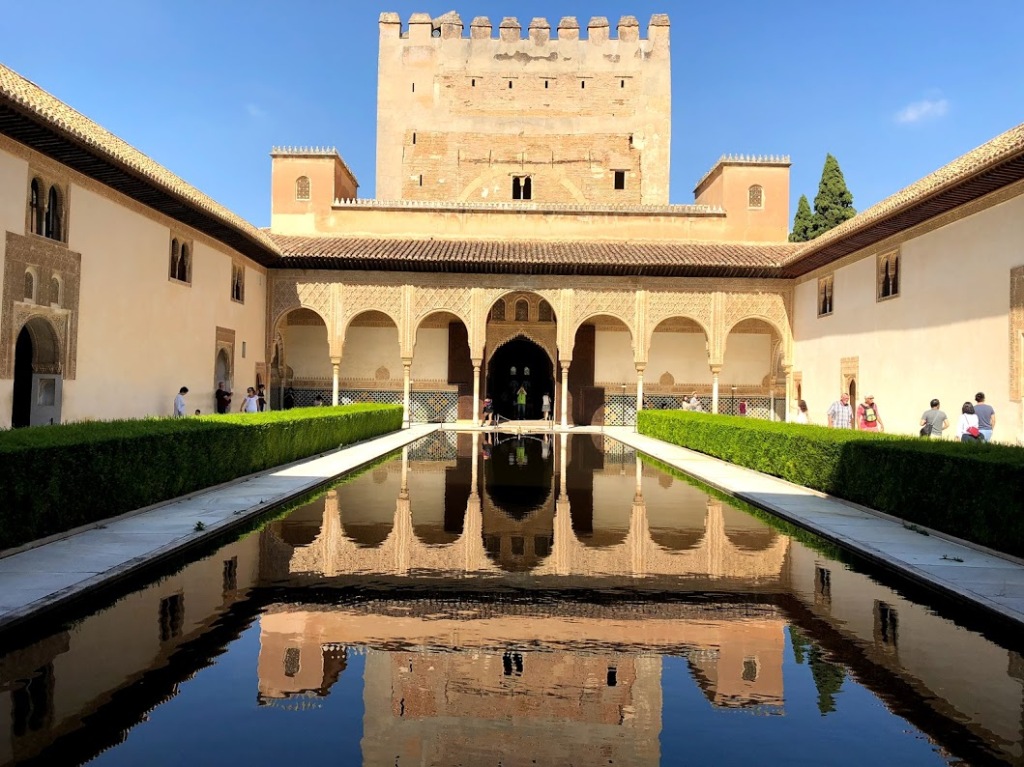

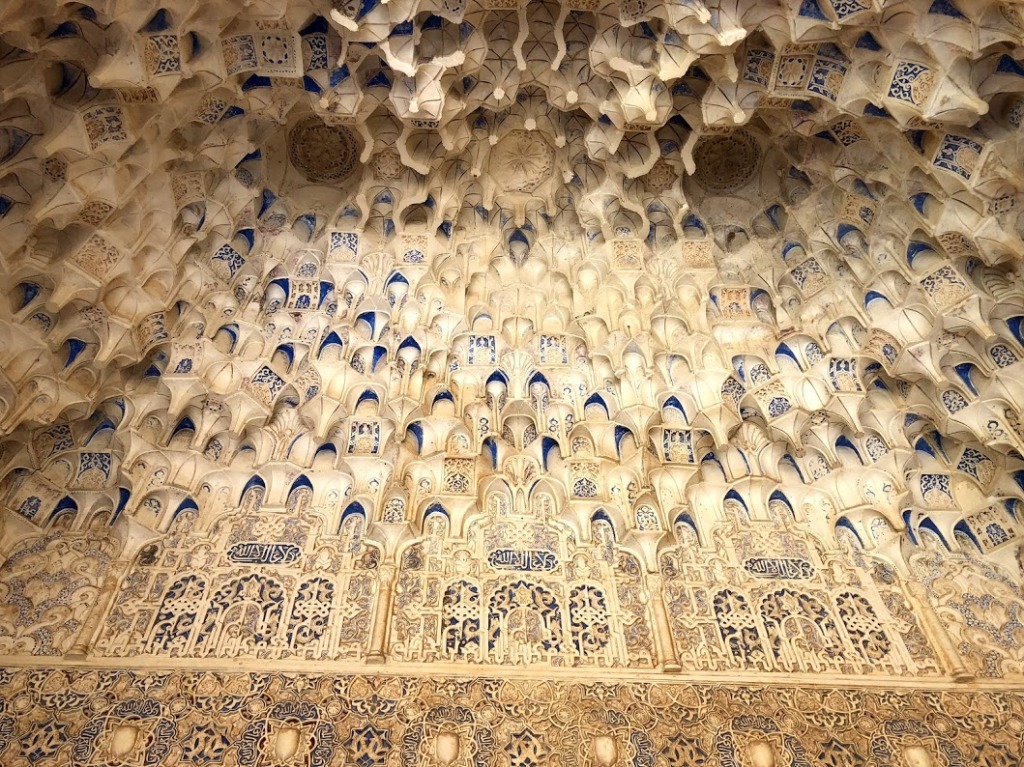
The most photographed section of the Alhambra is the courtyard of the lions. It is so called after the central fountain supported by 12 lions spurting water from their mouths. There is also an inscription at the edge of the fountain praising the ingenuity of the hydraulic system behind it which ensured that a different lion would spurt water every hour back in the day. Sadly though you don’t get to see that today but the spurting is still on.






Although many experts argue that the authenticity of the Generalife gardens as they stand today is questionable on account of the myriad alterations and renovations carried out over the centuries, the gardens aren’t half as bad. Flowing water, fountains and exotic flowering plants and trees here will remind you of the Shalimar gardens of Kashmir. The summer garden palace of the emirs, Generalife is actually separated from the Alhambra by a ravine and requires a slight climb. Enjoy the cool shade and aromatic air of this paradise and picture the Nasrid royalty doing the same. Not to mention it’s a great way to escape the sun beating down your head.

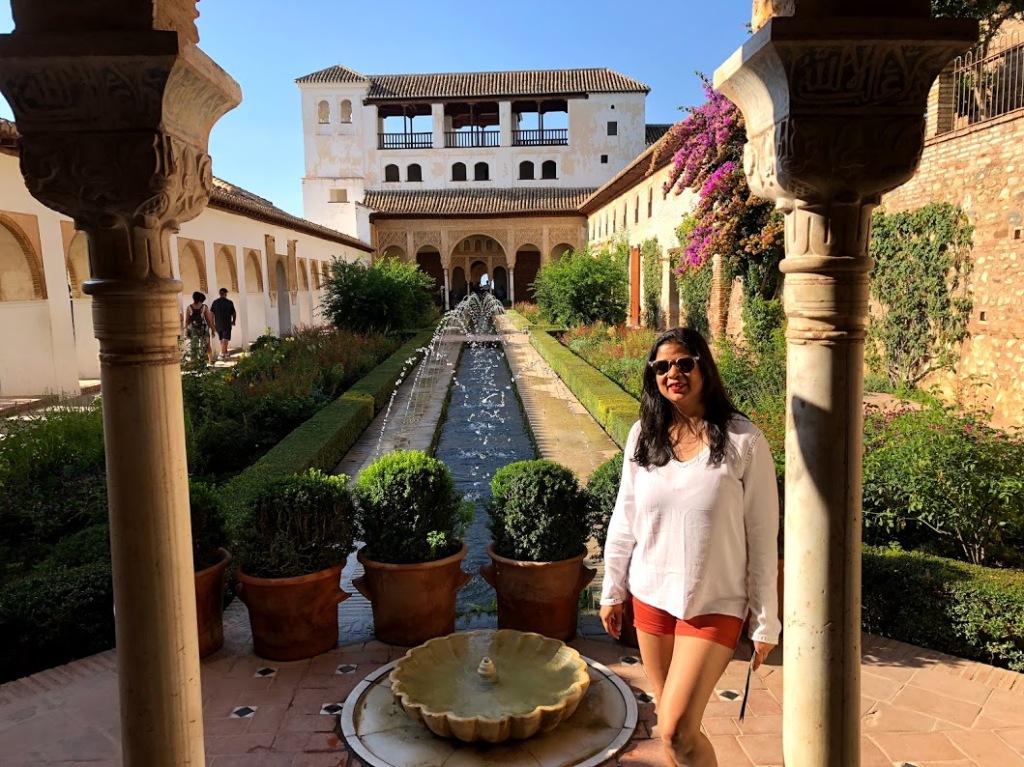
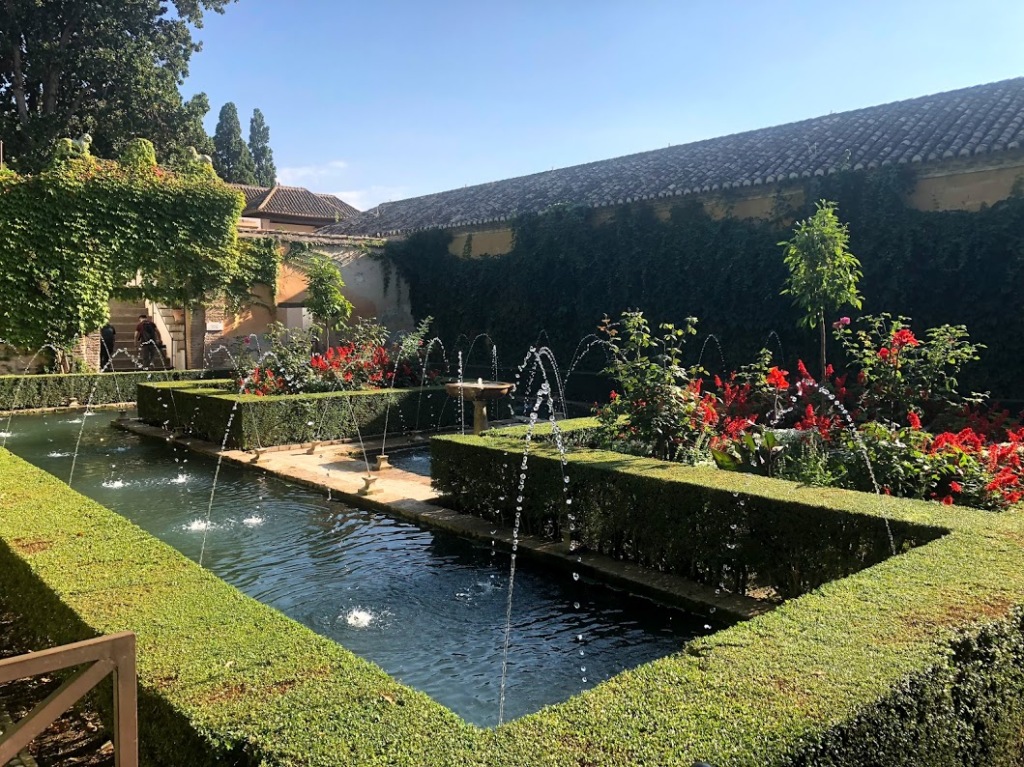



By the time we concluded our tour of the Alhambra and Generalife, the sun was no longer visible above the horizon but the day was still bright. The numerous birds in the garden trees filled up the atmosphere with their evening cacophony and the wind began to flow again. We began climbing down the hill to Campo del Principe, our home for the night and even though climbing down is easier on the legs we knew we had expended our energy reserves for the day. I strongly suggest another day for Granada that may be spent loitering around the town, simply taking in the sights and smells.

I must admit that for someone from the Indian subcontinent, the Islamic influence in Andalusian architecture may not be completely new or awe-inspiring given our own rich Indo-Saracenic heritage. But what you will certainly not find back home is the amalgamation of so many different styles- Roman, Renaissance, Baroque, Moorish and the list goes on.
Even though you don’t find any Muslims in the peninsula today, the legacy of the Moors is well preserved in its most remarkable buildings and public spaces. Cordoba, once the capital of the Umayyad Caliphate is another significant site of Moorish heritage that must be included in your Andalusian itinerary if you have the time. We had other plans for the next and final week of our holiday. So, bidding adieu to Al-Andalus we continued our journey north to the great Catalan capital of Barcelona and further to the great Pyrenees.
In case you are interested in finding out more about our trip through Spain and Portugal, read my other entry- A tale of two cities.


Beautiful clicks with realistic and touching description
LikeLike